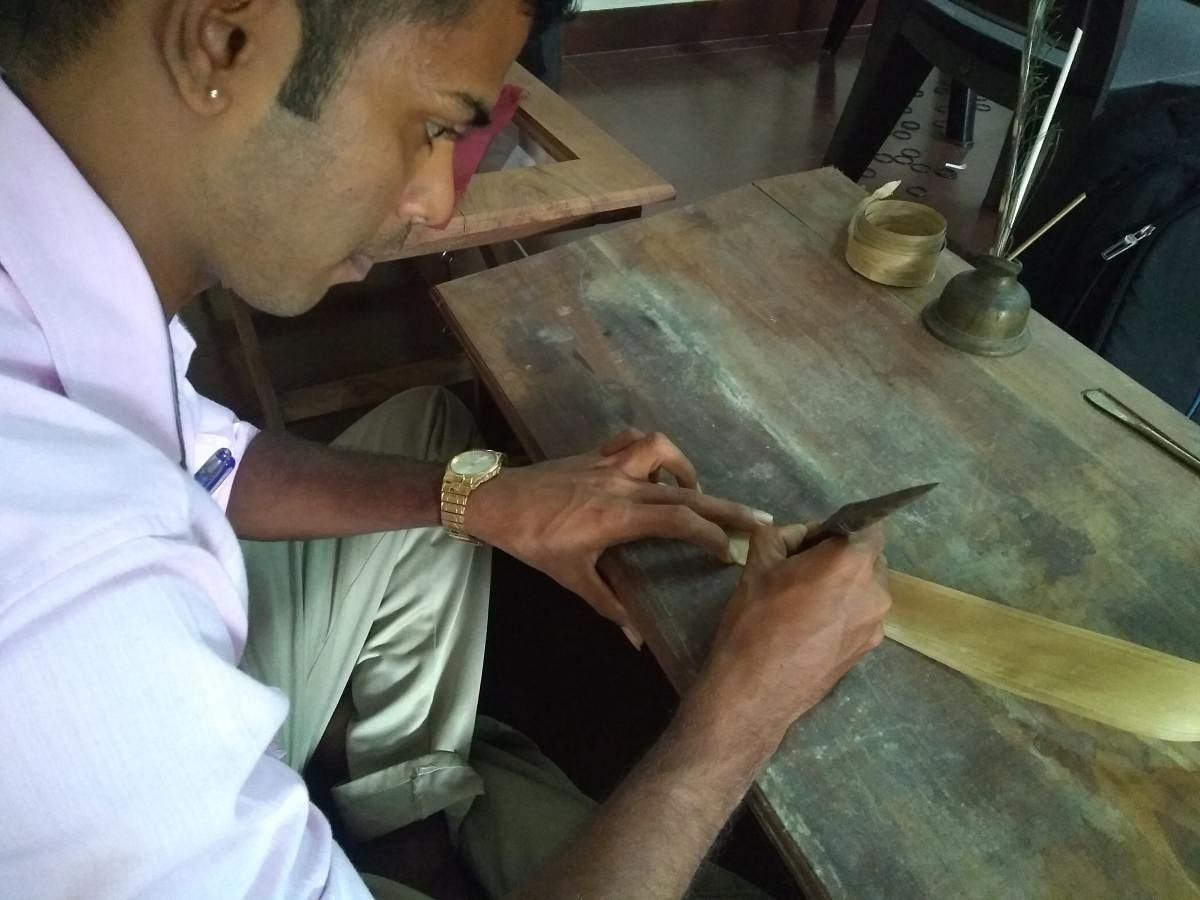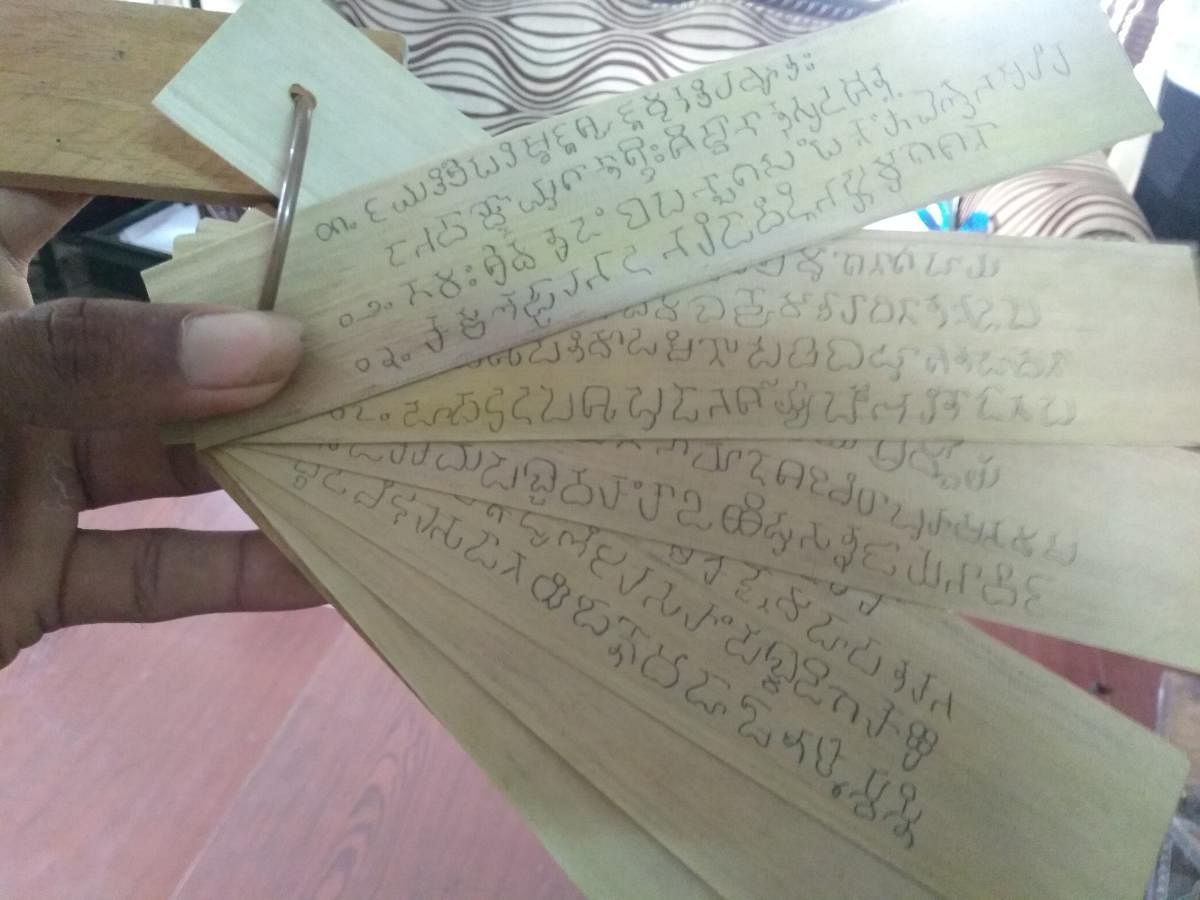

Udupi, known for its Brahminical scriptures, temple architecture and piety, is witnessing a silent revolution in the revival of the time-tested palm-leaf documentation.
It’s a humble beginning though, as only three researchers are involved in conserving shasanas, stone inscriptions and orders of temples and royal families on palm leaves.
The Oriental Archives Research Centre, which had a modest beginning a few years back, digitised palm-leaf inscriptions and soon found that this kind of documentation is the best classical way of preservation.
Abundance interest
S A Krishnayya, the folk researcher who is spearheading this revolution, says, “The palm leaf has the character to sustain itself for long periods, even centuries. For example, we have the original palm-leaf inscription of Kautilya’s Arthashastra, dated 340-250 BCE, at the Institute of Oriental Studies in Mysuru. It was discovered in the early-20th century and was produced during the times of Chandragupta Maurya. I had the opportunity to examine it for material stability, and I found the palm leaves had only gone dry, but not brittle. I feel it could be better-preserved with the use of simple mechanical devices.”
“The modern methods may not be long-lasting,” he adds.
Subhas Nayak, a new generation post-graduate in archaeology, is keen on making the art of palm-leaf inscriptions widespread.
He has perfected the process of preparing palm leaves for inscription.
“We follow the classical method — the raw palm leaves will be processed in hot water filled in large copper vessels; they have to be sunbathed to a certain grade; and finally be rubbed on the bamboo stick for the paper-like texture. When we write with a kanta (a metal stylus pen), we do not see our inscriptions, but when the inscription is dabbed with charcoal fluid, the letters appear on the palm leaves like magic — the charcoal fluid fills the engraved letters — and the document is ready. However, the writer has to be proficient in the art of writing, for mistakes cannot be corrected or struck down. This is where the palm-leaf inscription poses a challenge, but it can be overcome by practice,” Subhas says.
Another student and practitioner of palm-leaf inscriptions, Musica Supriya, a computer teacher by profession, has successfully tried to include pictorial inscriptions, the miniature art filled in coloured pigments.
“In fact, miniature art on palm leaves is not new. The ancient Dhavala trilogy engraved on palm leaves is full of miniature art; what Supriya is attempting is a revival of miniature art on palm inscriptions, which was absent for a long time,” Krishnayya says.
The palm-leaf engraving is a dying art, and if not revived, will soon be extinct, says historian and teacher Sridhar Bhat. “We get stone edicts in temples, ruins and old houses; they have to be copied and transcribed on to more stable storage media. Of course, now we have options from the digital world, but how to keep them in classical form? Palm-leaf inscriptions are the only option. Many edicts we found in Barkuru, that belonged to Megalithic Era, are now being inscribed on palm leaves,” Bhat says.
The researchers are working on a total revival of palm-leaf documentation. The Palmyra tree — srithale (Corypha umbraculifera), which is on the red list, is a hardy variety. It flowers only once in 80 years, and dies after that.
Range Forest Officer of Mangaluru, P Sridhar says that in many places in the narrow plains of the coastal areas, they have tried to grow the trees, but the success rate has been low.
Krishnayya has a better plan, “We have collected over 30,000 seeds from the wild; usually every tree puts out nearly 2 lakh seeds once in its life. The seeds we collected have been distributed among various groups across Tamil Nadu, Kerala, Andhra Pradesh and Karnataka. We have also told them the process of incubation, germination and selection of place for transplanting,” Krishnayya says.